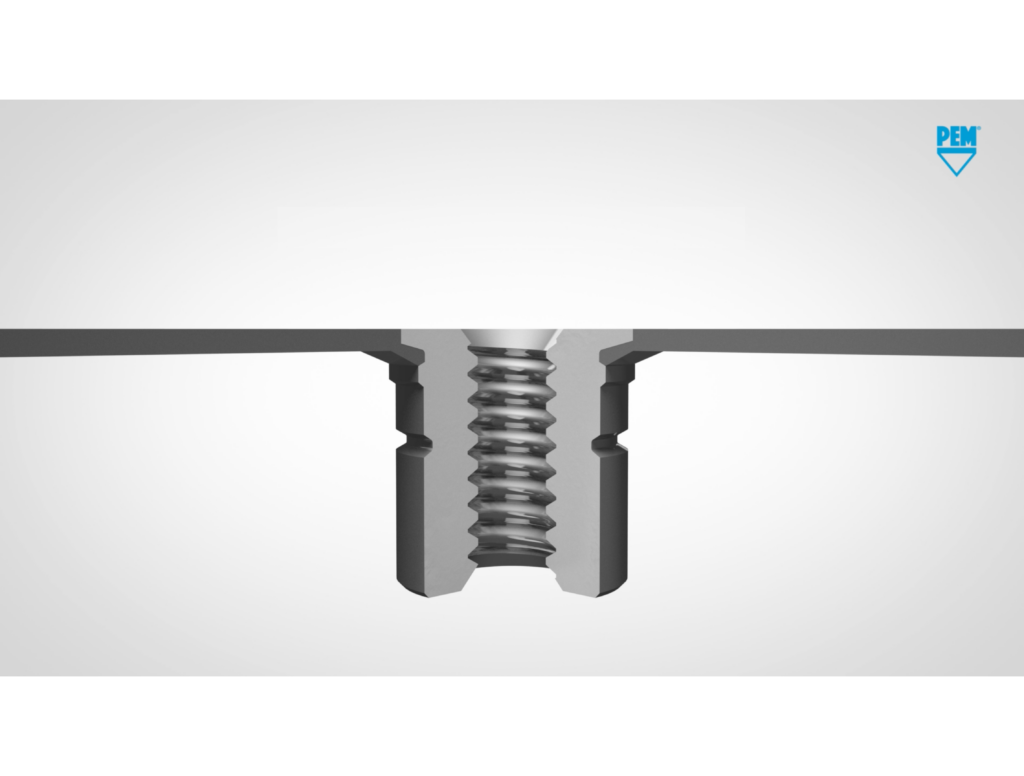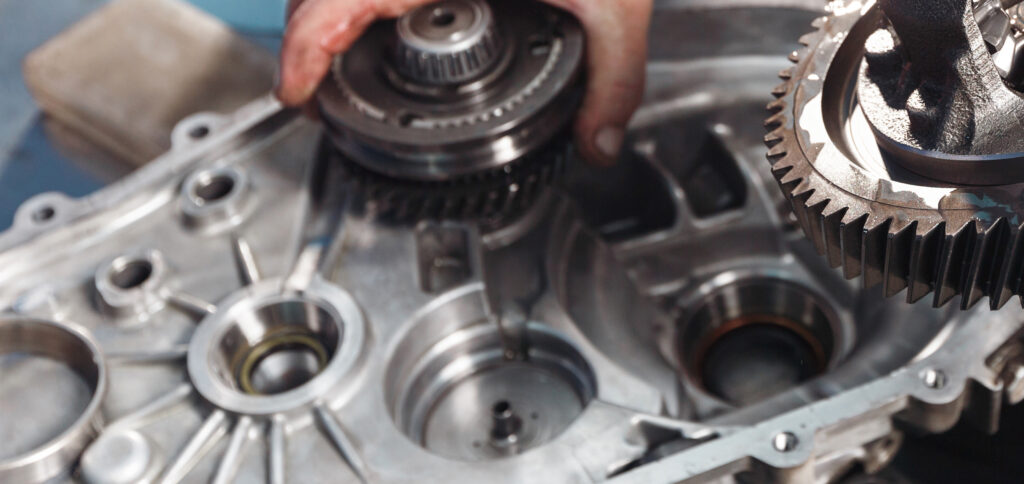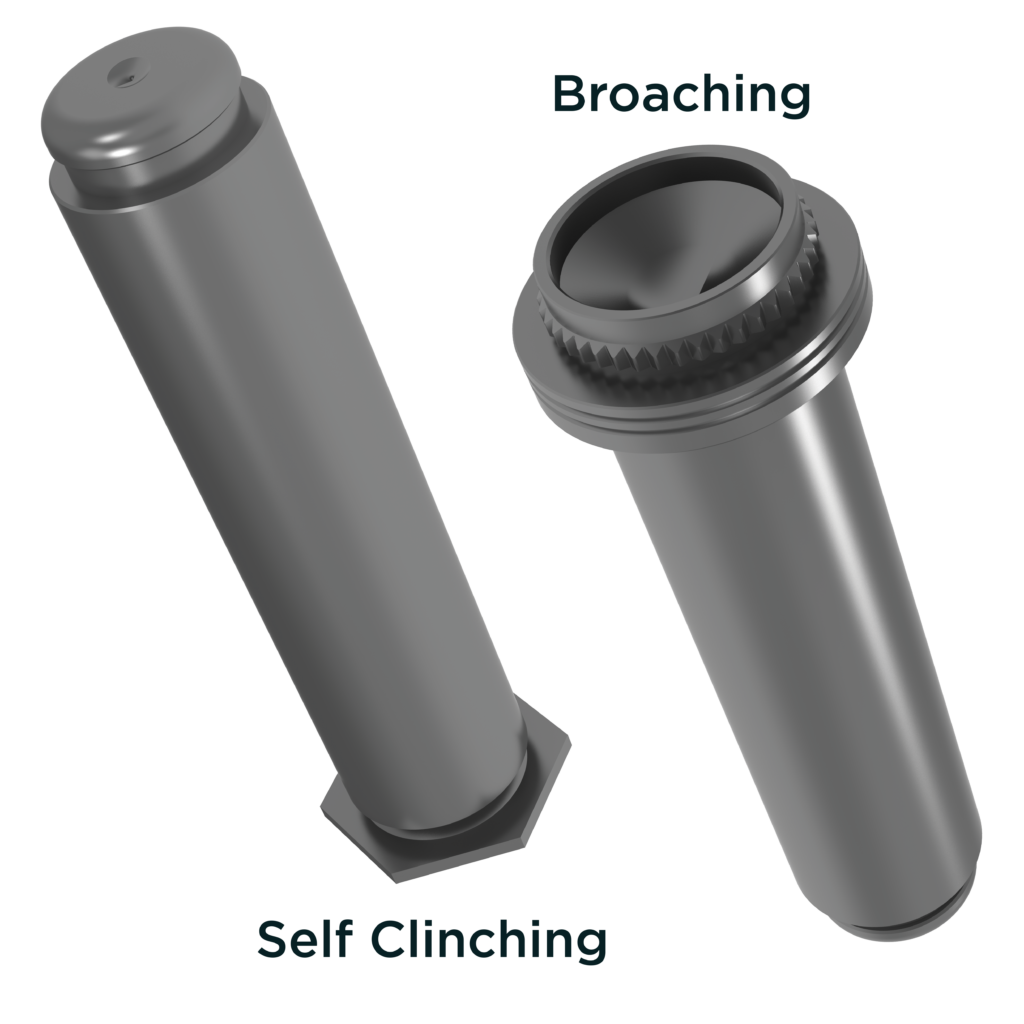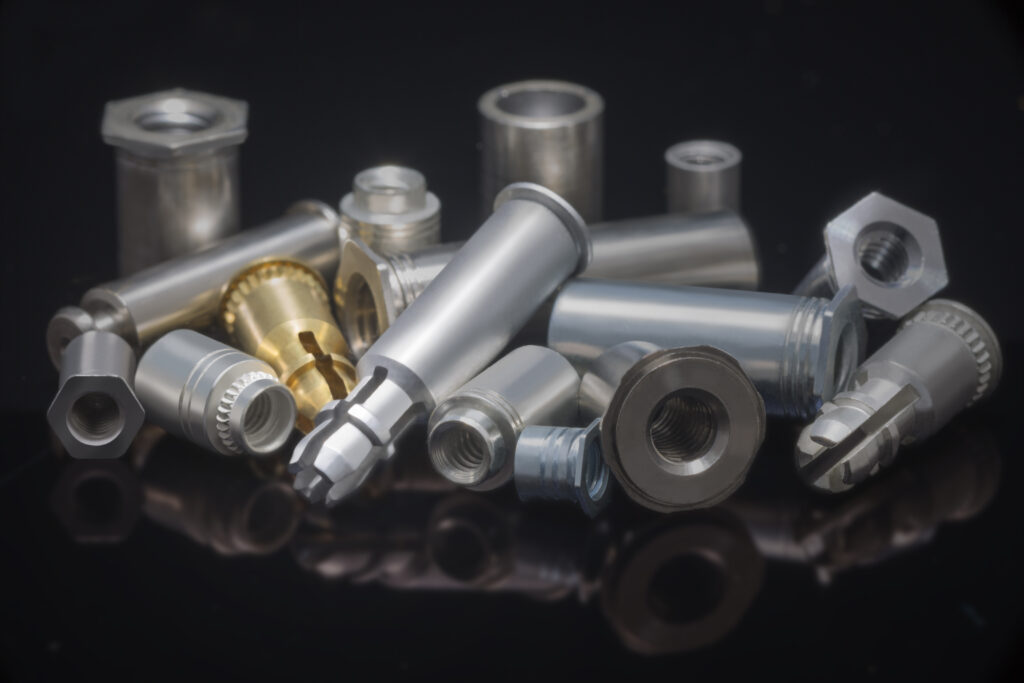
Table of Contents
Product Pages
Standoffs
KEYHOLE® Standoffs
SNAP-TOP® Standoffs
Nuts
Clinch Nuts
Floating Nuts
Blind Nuts
Flush Nuts
Locking Nuts
Rivet Nuts
Studs
Locating Pins
Captivated Screws
Simple Screws
Spring-Loaded Screws
Knob Cap Screws
Threaded Inserts
Press-In Inserts
Molded-In Inserts
Ultrasonic/Heat-Staking Inserts
Compression Limiters
Specialty Fasteners
Cable Tie Mounts
TACKPIN®
Panel-to-Panel Fasteners
Right Angle Fasteners
Attachment Technologies
Overview
Molded-in inserts are designed to maximize their outer surface area to increase the pull-out and torque-out strength in a plastic part. While some parts simply have a diamond knurl covering the entire length, a flat groove or undercut around the outer diameter can be used to create a valley between two knurled regions that further increases pull-out strength. Blind options are commonly used in holes or bosses in larger molded parts so that the liquid plastic doesn’t infiltrate the threads during solidification, but thin boards can still use through-threaded inserts so long as the part is as tall or taller than the panel thickness. These parts are typically cut from round bar stock of brass, aluminum, or stainless steel depending on the electronic or corrosive requirements of the application.
Installation
Molded-in inserts involve the most costly method for putting metal threads in plastic due to the required tooling associated with every new part but result in the best performance when comparing pull-out and torque-out resistance. A die used for injection molding is fitted with pins that meet the minor diameter of the insert. These pins precisely and reliably place the inserts within the volume of the part, whether flush with a flat surface or at the end of a pylon. After solidification, the pins slip out of the inserts as the die is disassembled, leaving permanent, strong threads. This method is ideal for thermosetting epoxies that can’t be re-melted for heat staking and are too stiff to adequately secure a press-in insert.
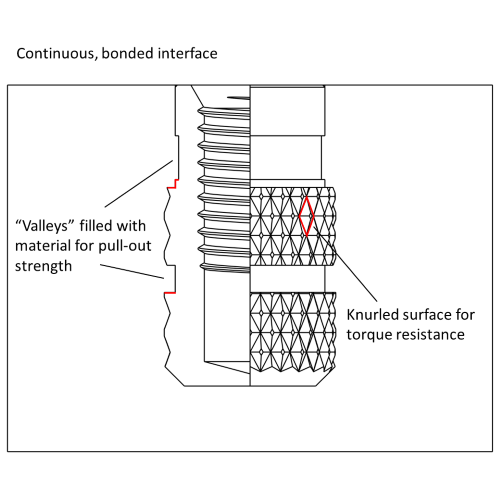
Demonstration of pin-placed, threaded inserts being molded into a plastic assembly.
Application
Generic electrical enclosures can be designed for specific applications subject to different environmental conditions, whether it’s just dust at room temperature or extreme temperatures and precipitation. A watertight enclosure might be made from thermoset polycarbonate for its temperature and UV resistance with a soft gasket to seal the interior from the elements. To securely fasten the cover of this enclosure to the box, metal threaded inserts can be molded into bosses in the corners of the box prior to solidification and mated with a screw that passes through the cover.
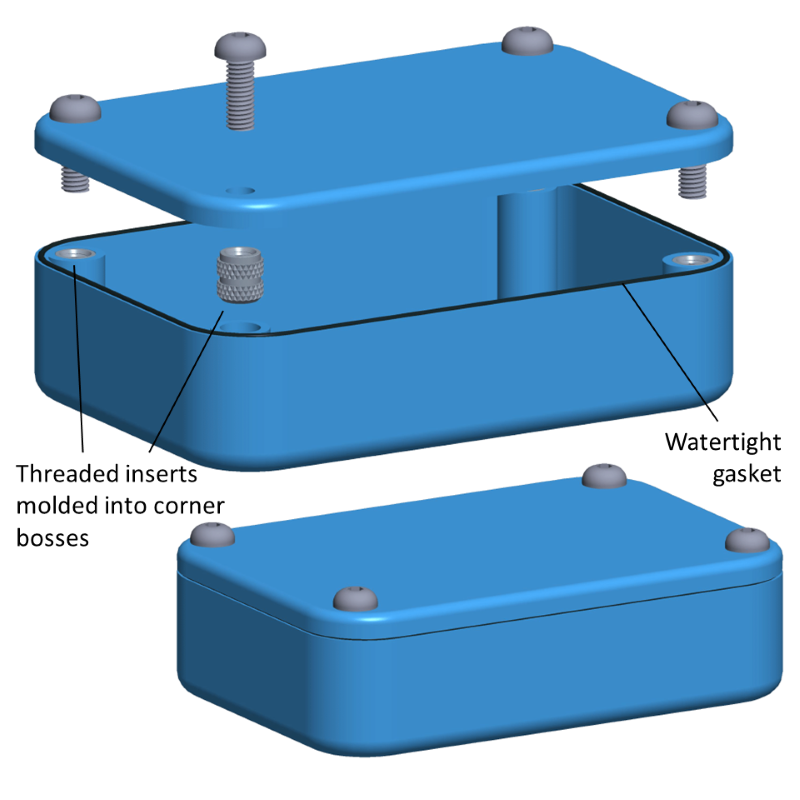
Watertight electrical box made from threaded inserts molded in plastic.
Alternative Solutions
Since thermosets can’t be re-melted, heat-staking or ultrasonic inserts are largely incompatible with this application. Press-in inserts could do the job, but the much cheaper route would be to tap threads in the brittle plastic, as this would reduce the complexity of the mold tooling, the weight of the enclosure, and the number of parts. However, it may be a less reliable joint for maintaining the seal of the gasket around the edge of the box, increasing the risk of failure as well upon overtightening.
Relevant products from PEM:
Explore a variety of molded-in inserts in our Product Finder:
To learn more about PEM molded-in inserts, visit the SI® Catalog.
Have a project?
Let’s get started.
Talk to us about creating a custom part, tool or process. We are equipped to help you to take on and solve your biggest engineering challenges.
Talk to us about creating a custom part, tool or process. We are equipped to help you to take on and solve your biggest engineering challenges.

Looking for CAD Downloads?
Access to the original PEM Catalog and CAD downloads.
Have a question?
Talk to an Engineer.
See what’s possible.
Connect with a PEM® engineering expert today and discover a reliable, cost-effective fastening solution for your challenging applications.
Or Call Us: 1-800-342-5736




